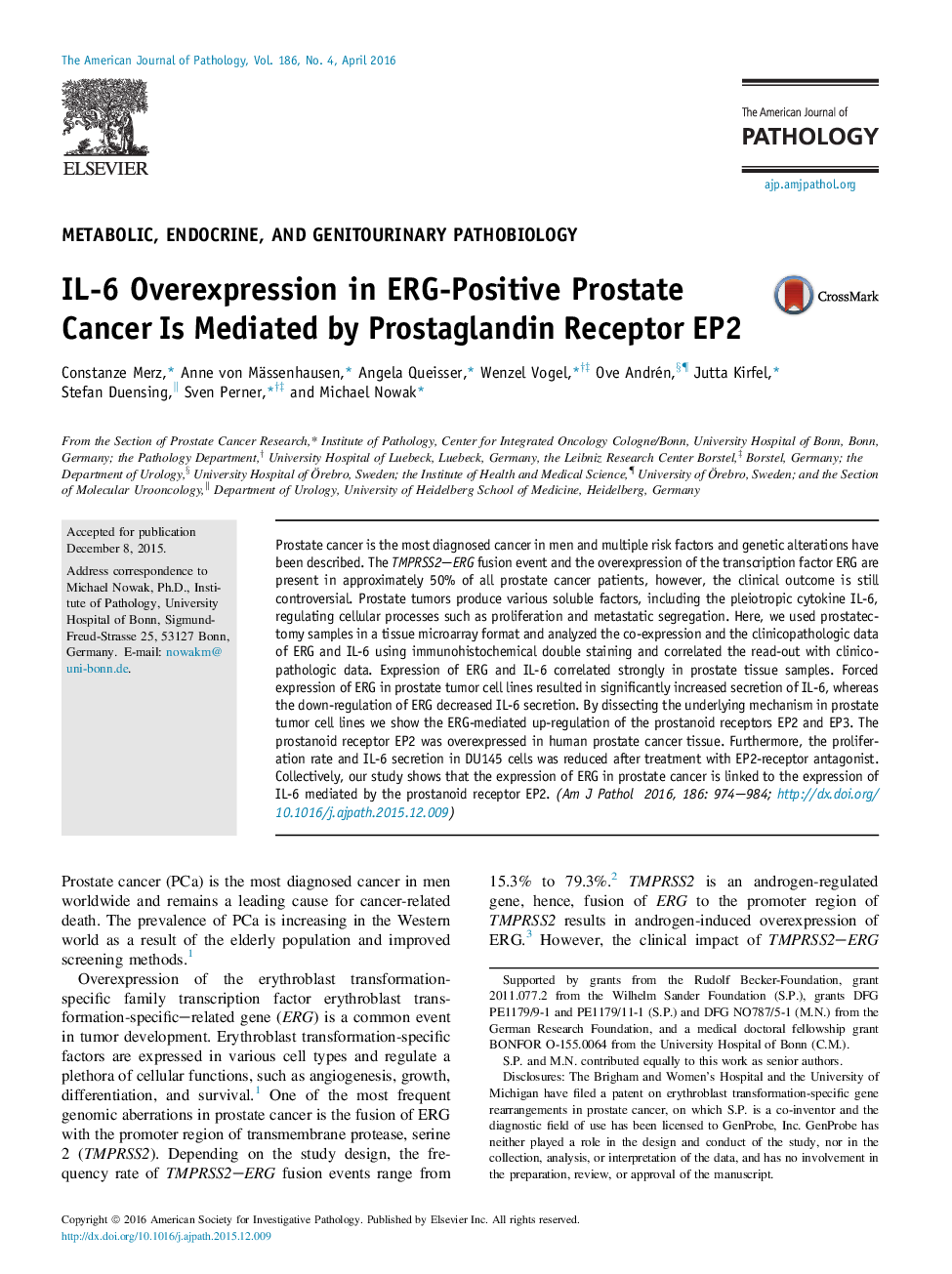| Article ID | Journal | Published Year | Pages | File Type |
|---|---|---|---|---|
| 2865747 | The American Journal of Pathology | 2016 | 11 Pages |
Prostate cancer is the most diagnosed cancer in men and multiple risk factors and genetic alterations have been described. The TMPRSS2–ERG fusion event and the overexpression of the transcription factor ERG are present in approximately 50% of all prostate cancer patients, however, the clinical outcome is still controversial. Prostate tumors produce various soluble factors, including the pleiotropic cytokine IL-6, regulating cellular processes such as proliferation and metastatic segregation. Here, we used prostatectomy samples in a tissue microarray format and analyzed the co-expression and the clinicopathologic data of ERG and IL-6 using immunohistochemical double staining and correlated the read-out with clinicopathologic data. Expression of ERG and IL-6 correlated strongly in prostate tissue samples. Forced expression of ERG in prostate tumor cell lines resulted in significantly increased secretion of IL-6, whereas the down-regulation of ERG decreased IL-6 secretion. By dissecting the underlying mechanism in prostate tumor cell lines we show the ERG-mediated up-regulation of the prostanoid receptors EP2 and EP3. The prostanoid receptor EP2 was overexpressed in human prostate cancer tissue. Furthermore, the proliferation rate and IL-6 secretion in DU145 cells was reduced after treatment with EP2-receptor antagonist. Collectively, our study shows that the expression of ERG in prostate cancer is linked to the expression of IL-6 mediated by the prostanoid receptor EP2.
